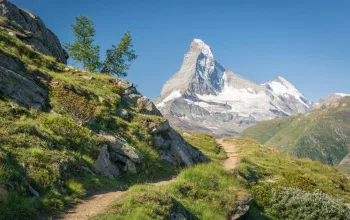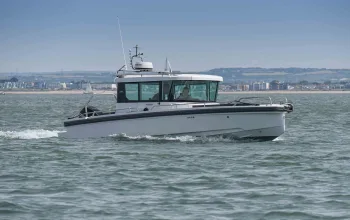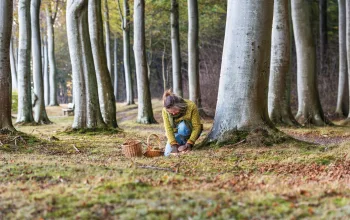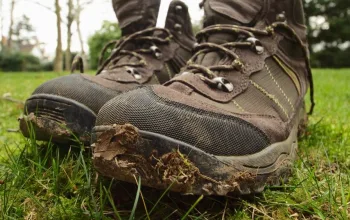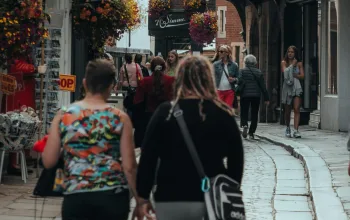A night sleeping out under the stars is fun, requires minimal set up and kit, and gives you the best reconnection with nature away from the comforts of home and office ‘ordinary life’. Wild camping is at the centre of adventurer Alastair Humphey’s Microadventure concept. Here he tells us where, and how to start.
Where to do it?
“Wild camping is legal in Scotland but there are two answers regarding where you can sleep wild in England and Wales,” says Humphreys. “The technical, legal one is ‘almost nowhere (without permission), and the practical one is ‘almost anywhere’. Common sense and courtesy are king. No one minds wild camping, so long as you’re not blatantly on private land, near someone’s home without asking, or otherwise being annoying. There’s a big difference between putting up a tent in the middle of a cornfield and lighting a huge fire, and discreetly tucking your bivvy bag behind a hedge near a foot path a few miles from a village, and then heading on your way nice and early in the morning.”
Scout for camping spots on an OS map before you go and circle some options: Look for lots of contour lines with flat bits on top for hilltop beds with the best sunrise views. Note footpaths leading into open countryside, or to green areas of woodland, blue areas of water, or even field-boundary walls that might provide shelter should the weather turn bad.
Pick your spot – carefully…
- Seek shelter: wind chill will do just that.
- Down a bit: for every 100 metres you climb, the temperature drops by about 1 degree Celsius, so if it’s cold, sleep further down the hill.
- Up a bit: that said, avoid valley floors, where cold air settles.
- Sleep dry: take off wet clothes before you snuggle down.
- Peekaboo: pull the draw cord of your bivvy and sleeping bag tight to leave just a small breathing hole. It’s claustrophobic but effective!
- Eat well, sleep well: a hot, fatty dinner will take a long time to digest and keep you warmer. Fish and chips!
- Go to bed warm: do some star jumps before getting into your bag, and then some sit-ups once you’re inside it. A good, insulating sleeping bag won’t warm you up but will keep this heat inside.
Before you go…
- Check the weather: Sleeping out under the stars is magical. Lying in a puddle with just a bivvy bag for protection can be miserable.
- Don’t forget to tell someone where you’re going and when you’ll be back!
- Take a friend –you’ll feel less vulnerable, and you’ll be able to reminisce with someone after about your shared adventure.
- Give yourself a little daylight to find a camp spot – but if you do arrive in the dark, don’t worry, says Humphreys: “Darkness is the microadventurer’s friend: simply stroll out of town, fish and chips in hand, and roll out your bivvy bag in the first peaceful spot you find. Sleep well, enjoy the sunrise, then leave. It’s as easy as that.”
- Arrive late, leave early, and leave absolutely no trace.
What do you need?
The whole philosophy of microadventures advocates simplicity; removing perceived obstacles to just getting up and going. Unfortunately the specialist kit you think you need is one such obstacle. “The point is that you do not need much time, money or specialised equipment to begin with,” says Humphreys. “You probably own most of what you need already. The rest can be bought off eBay, borrowed or improvised.” Here’s a list of the essentials:
Rucksack
“A 30 litre pack is probably big enough for a simple over-night microadventure,” says Humphreys. “For extra waterproofing, line it with a bin bag too. Take an extra bin bag too, for putting your bag and everything else into during the night.”
Sleeping bag
If you’re going to wild camp all year round you could easily own four or five different sleeping bags, from ultralight down summer bags to über-expensive four-season down bags. But for getting started, you can make do with whatever you can get your hands on: “Any old sleeping bag, plus a woolly hat and a few jumpers will be fine for your first sleep out,” says Humphreys.
But if you do want to buy a new bag, buy one for the ‘normal’ conditions you will be using it most for, not the extreme temperatures you might ‘one day’ encounter. You might have to suffer a little on the very rare occasion the weather is too cold but you’ll save loads of money. “As a general rule, an occasional bit of misery is fine,” says Humphreys, “death a little less so!” In terms of filling choice, as a general rule, if it will be mostly dry get a down bag; if mostly wet, get a synthetic one.
Prices range from £15 for something like Mountain Warehouse’s summer Basecamp 250 Bag, to top-end versions like Rab’s goose cold-weather, down-filled Neutrino Endurance 600.
Bivvy bag
As most microadventures involve sleeping out under the stars, a bivvy bag that keeps you and your sleeping bag dry, and helps you get a good night’s sleep is the one bit of kit you can buy that will improve your microadventure experience immeasurably. “It’s like a raincoat for your sleeping bag,” explains Humphreys.
Cheaper, smaller, lighter, more discreet, and quicker to set up and take down than a tent, the bivvy is the perfect companion to a microadventure.
If the weather is likely to be really wet, you’re better off taking a ‘basha’ (essentially a tarpaulin shelter stretched out with bungees), or even a tent.
Types and prices of bivvy bags vary widely, with the best made from waterproof and breathable fabric. These range from Alpkit.com’s £30 Hunka, through the British Army’s subtle green Gore-Tex Bivi Bag, which can be found in many eBay shops from about £30 used, to Rab’s Pertex Shield Survival Zone bag (£100).
An alternative budget option is the eponymous orange survival bag from the likes of Highlander and Life Systems, which is available for just a few pounds in most camping shops and many online outlets including eBay. Although a night in one will leave you and your sleeping bag a little damp in the morning through trapped condensation, even in winter, a survival bag will be fine for a one-night microadventure.
“Don’t forget to hang up both your sleeping bag and bivvy bag separately to dry out before storage once you get home,” says Humphreys, “even the most breathable bivvy will leave some condensation on your bag,”
Sleeping mat
Even travel-toughened adventurers like Humphreys swear by the necessity for the extra comfort of a mat to sleep on: “The nights I have not bothered with one have all been a miserable disaster,” he admits. If using with a bivvy bag, put the mat inside the bag but outside the sleeping bag.
Mats range from the £5 roll of foam that have adorned backpacker’s packs through the ages, through to self-inflating mats such as Vango’s Trek Compact (£20), to ultra light self-inflating and compact-packing mats such as Thermarest’s 350g NeoAir Xlite mat (£120).
And don’t leave home without…
Torch (head torches are better, water-proof head torches are best!), rain coat and woolly hat (even in summer), warm clothes for the night, food that doesn’t need cooking (remember that you burn extra calories when you’re cold), water, toothbrush and paste, matches, loo roll: “In case you forgot to follow mother’s advice and ‘go before you leave home’,” says Humphreys, map and compass (learn how to use them before you leave home), and camera phone (turned to ‘Airplane mode’) for bragging on social media when you get back about the sunrise you woke up to. Tag your post with #microadventure so that other microadventurers can envy you and get inspired too.) A phone is also a good emergency tool, should you need help.
‘Luxury’ items…
Camping stove and lighter
Multi-tool with a knife on it
Cooking pot or mess tin, cup, and a spoon
Tea or coffee, porridge, instant noodles, tuna
Tarpaulin with eyelets, bugees and tent pegs to make a ‘basha’ - a tarpaulin shelter stretched out with bungee cords
And of course clean pants (“They can double as an extra hat if it gets too cold,” says Humphreys. “Just don’t forget to take them off before you get home.”)
Check out Alastair Humphrey’s truly inspirational blog here
And buy his awesome Microadventure book here






